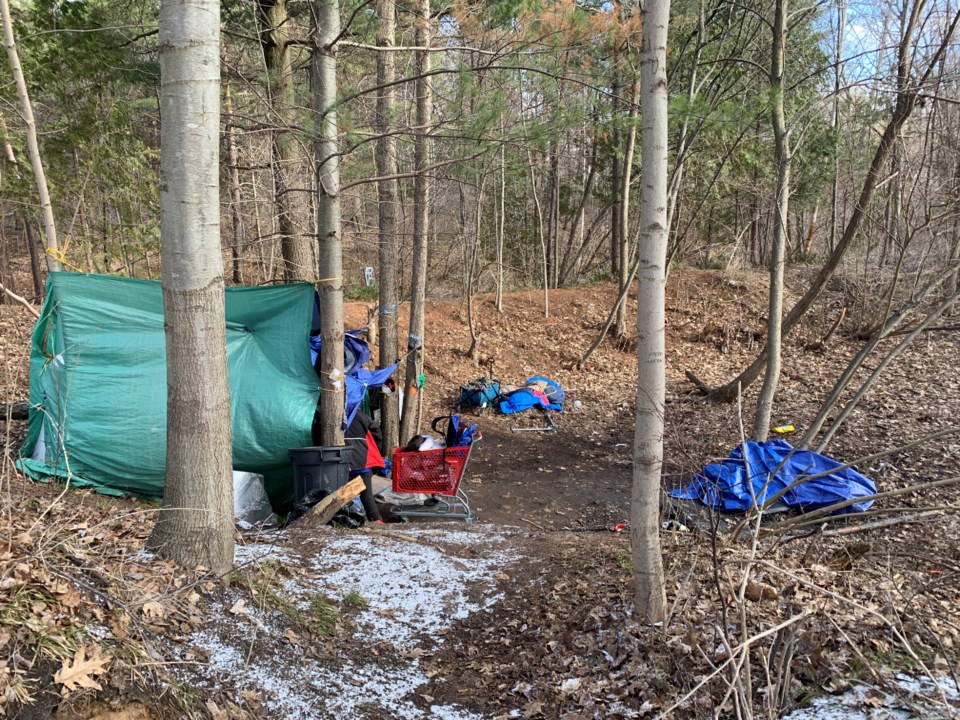The County of Simcoe has launched a new pilot project aimed at enhancing and mobilizing outreach services to the region’s homeless population.
The program was made possible thanks to some “left-over,” end-of-year funding that officials were able to reallocate approximately $100,000 to the program, which includes three teams of two in Midland, Barrie and Orillia. The funding was made available in early March and the pilot program will run through until approximately the end of June.
“Oftentimes with our provincial and federal funding, we put together an investment plan at the beginning of each fiscal year and as the services ebb and flow, we reallocate funding where needed if there’s some under-spending. This is a good opportunity to invest in something for a 90-day period,” Mina Fayez-Baghat, the county’s general manager of social and community services, told BarrieToday,
“One of the things we’ve been trying to do is an overall review of our shelter system. As a part of that review, we heard a lot about outreach services and the different types (of services),” he explained.
Prior to the formal report and the consultant’s official recommendations, the county opted to launch this pilot an initiative, which he said is considered as a “best practice” in other communities, where properly trained two-person teams are mobilized in a vehicle to offer the same types of outreach services, support and care as provided by outreach service providers in the area.
The teams are licensed and insured to give rides and allow the individuals they are assisting to access services across the county, he added.
“In inclement weather, we were trying to activate this towards the last month of our winter response and began to use it as a way for mobilized warming centres," Fayez-Baghat said. "Sometimes, someone is living outside in a remote or hard-to-reach area , relative to our shelter services, and this would be an opportunity to have that person receive a ride to one of those services and also just stay warm."
The investment is just one of many different approaches the county is taking based on the recommendations received in order to continue to address gaps in its system, he said, and to better support individuals with what he called “more narrowly tailored services."
"Part of our continued investment plan is to continue (these) types of resources year long. We do want to measure it a bit, so this one is more data-informed — the outreach teams are quantifying the number of interactions, the number of offers for referrals and connections they’ve made with clients, etc.," Fayez-Baghat added. "Our outreach focus, especially in the summer months when the weather isn’t the challenge, builds really meaningful relationships … so we can better understand the depth of need each client may have and the types of services and support they may be referred to."
Hayley Murdoch-Fyke, executive director for the John Howard Society of Simcoe and Muskoka, was unfamiliar with the pilot program, but told BarrieToday that additional outreach supports are definitely needed throughout the county.
“Having the ability to be mobile is great and will allow access to resources that some individuals may not be able to utilize based on their geographical location or other limitations," she said. "There are several agencies within Barrie and Orillia who currently provide outreach services and are experienced with the populations who benefit from this type of service.
"I believe it’s important for our agencies to work in partnership with the county on this initiative to ensure clients are connected and supported," Murdoch-Fyke added.
Although it's still early days, the feedback has been positive so far, said Fayez-Baghat.
“It’s been very welcomed from the three teams that have been activated through the different organizations, specifically in Midland and Orillia where this was an identified need that has been raised by the community as well as the organizations serving that vulnerable population,” he said, adding he anticipated the initial data from the program to start to come in by the end of April.
“(That) will begin to give (us) a better sense of what the first few weeks have looked like, and then we will be able to begin to capture some of the client experience as well,” Fayez-Baghat added.
The ultimate goal would be to create a “connected system of care” across all the municipalities, he said.
“It would be to be able to create enough connectivity and mobility throughout the county, so that we can approach homelessness from a system perspective using a data-informed approach to place people in the services where they are available, even if geographically that may not have previously been an option," Fayez-Baghat said.
"Now it is an opportunity to connect people directly to a service, whether it be a space, case manager or some sort of housing help opportunity, regardless of where they are physically located,” he said. “Obviously, we want to design hub-and-spoke models across the county, but certainly we want to make sure that there is an inter-connectivity so that it is a complete system of services.”
Once the 90-day pilot program is complete, the idea is to find efficiencies and then be able to scale that program to one that is year-round, Fayez-Baghat said.
“The goal is to have a fully operational model of outreach that includes multiple ways to conduct outreach. We are looking to do a lot of on the ground, face-to-face connections with residents and vulnerable clientele in both the easy to reach, well-known spots in our communities as well as the hard to reach areas where some individuals may be across the county," he said.
"The hope is, rather than a response service, to be more of an ongoing, standing service to engage and to capture more info so we can understand where the trend is happening when it comes to people experiencing homelessness.”

.png;w=120;h=80;mode=crop)

